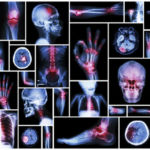New Terminology
2017 EDS International Classification: Your Questions Answered
The final classification documents are not available to view until March 15th. At that time they will be published on the http://ehlers-danlos.com website
This is an exciting time in the history of the Ehlers-Danlos syndromes (EDS).
On March 15, 2017, the American Journal of Medical Genetics (AJMG) will be publishing the internationally agreed upon 2017 EDS Classification, for the first time since 1997.
A consortium of global medical experts has agreed upon evidence-based diagnostic criteria which will ensure an enhanced level of credibility and understanding of EDS and Hypermobility Spectrum Disorders (HSD) going forward, to enable us to progress in research and management.
Not only do we have a new set of criteria, but the consortium of experts has committed to meet every two years to re-evaluate and update them where necessary, with the next medical symposium planned for Ghent in 2018. Critically, this international agreement will attempt to ensure that medical professionals now use these criteria to diagnose individuals with either one of the EDS subtypes or with Hypermobility Spectrum Disorder (HSD).
We would very much like to share all the work the International Consortium have done with you straight away; however, due to be publication agreements with the AJMG, our release of the information is embargoed until March 15, though the AJMG is in the process of putting the papers online as soon as they are ready. They will then be freely accessible on The Ehlers-Danlos Society website.
The Ehlers-Danlos Society is aware that some are concerned about what the new criteria will mean to them; hence, we are publishing this support document to help with some of the questions you may have. We would like to reassure you all that we are committed to ensuring that insurance companies, benefit providers and healthcare professionals are made aware of the changes, and that with either diagnosis, the recommended management is offered and pathways are there to ensure that patients are treated in the way they deserve.
We would like to reiterate that we are here to support and provide information to all of our community, no matter what diagnosis they have. We are committed to serving those affected by EDS and HSD as we have before.
Please take a look at the following table of new terminology. We ask that everyone please use these on social media, forums and in all communications. We all need to take responsibility to ensure the new criteria and terms are used so that the stigma we have all lived with for years is erased and we can move ahead at this exciting time.
We are here to answer any questions you may have; please send them to info@ ehlers-danlos.com.
2017 EDS International Classification
OLD |
NEW |
| Ehlers-Danlos syndrome | the Ehlers-Danlos syndromes |
| Hypermobility EDS | Hypermobile EDS |
| HEDS/VEDS/CEDS | hEDS/vEDS/ cEDS |
| Type 3, III, 4, 2, etc. | Please do not use numeral descriptors. It will now be Hypermobile, Classical, Vascular, etc. or hEDS, cEDS, vEDS, etc. |
Questions and Answers
Q-Are the criteria for hEDS stricter?
A-They might appear ‘stricter’ in that there are three groups of criteria that must be fulfilled, but the things that make up these criteria have always been what doctors would look for to make the diagnosis. The criteria are now much clearer as to what makes up the diagnosis and the various ways the diagnosis can be made. Specialists in the field have been working in this way but even then doctors might have differences of opinion. Now all doctors should find this much more helpful in supporting their decision making as to whether hEDS is present, and if not, what the problem might be.
Q-If the criteria has changed, will I lose my diagnosis?
A-NO. If you have received a diagnosis of hypermobile EDS previously, we do not recommend at this time that you would lose your diagnosis; however, for the purpose of research and the future registry, if you are re-evaluated you should have an updated diagnosis to reflect the changes
Q-Why have the international consortium made these changes?
A-There has been a lot of knowledge gained since the 1997 Villefranche Criteria and an expanded classification was needed to reflect new information about the genetics and clinical manifestations of the syndrome. The 1997 criteria offered a general description of what these were but they remained open to interpretation which has not been helpful. Research and progression in the EDS have been stuck in the mud for a long time; patients are not being managed and quality of life is not what it could be because of the lack of credibility associated with EDS. In being more clear about the diagnosis and how it is made in individuals we are better able to draw together groups of people with similar aspects to their condition, and undertake studies that look at the cause of the condition and the response to treatment. We have been consistent with other areas in medicine in aiming to better define subgroups of people with similar concerns. As well as looking at all the types of EDS, the consortium took the opportunity to look at all the symptoms and conditions that arise either as complications of hEDS or HSD, and which might have direct associations with hEDS. All the evidence and expert opinion was gathered to determine whether any of these features (e.g., fatigue, cardiovascular autonomic dysfunction, bowel pain, etc.) might form part of the criteria. At present there is insufficient evidence to add these to the criteria, but we recognize that they are present in some people with EDS and that health care professionals should be looking for them. There is a need for research to better understand how they link to EDS. Therefore our working groups of experts have written a number of clinical papers that describe these features and their management. This collaborative group agree that these criteria are not perfect, but they are the best that could be achieved with the evidence they currently have. Critically, this has been internationally agreed-upon. What is essential is that efforts are made to ensure that insurance companies, benefit providers, and healthcare professionals are aware of the changes, and that with either diagnosis the recommended management is offered and pathways are there to ensure that patients are treated in the way they deserve. The Ehlers-Danlos Society is committed to ensuring this happens.
Q-Are JHS and hEDS the same?
A-JHS and Hypermobility Syndrome will no longer be used but based on the old criteria and naming, it is thought that JHS and hEDS were one and the same. However, this was problematic and part of the reason we have now renamed and classified this group of people. The international community realizes that this population exists on a spectrum of issues. The new diagnostic criteria are describing this somewhat differently and the consortium have re-named these as described. (Hypermobile EDS and Hypermobility Spectrum Disorders) This is our attempt to describe two parts of this agreed spectrum.
Q – Is hEDS worse than HSD?
A – NO. One is not worse than the other. Both sit on a vast spectrum and can cause the same symptoms. What is important is that the problems that arise, whatever 2017 EDS International Classification: Your Questions Answered the diagnosis, are managed appropriately and that each person is treated as an individual. Both can be equal in severity, but more importantly, both need similar management, validation and care.
Q-So does that mean HSD is not a connective tissue condition?
A-No. HSD recognizes the laxity in the connective tissues. It also recognizes the instability that can occur in the joints. There are other reasons why a joint may be hypermobile or unstable (training, e.g., dance; arthritis or trauma damage; muscle disorders; rare disorders that cause bone and joint defects). These would be defined by the underlying reason or disease and not as HSD. These different ways hypermobility can appear in different groups of patients with other medical conditions is described in one of the papers being published by the consortium.
Q-Is hEDS genetic and HSD not?
A-We believe that hEDS has a genetic basis but as most will know there is no gene to test for hEDS or HSD. One of the reasons for having clear criteria for defining hEDS is that it should give us much better opportunities for research to identify the genes involved. We recognize the tendency for hEDS to run in families and this is why this observation is included in the criteria. Hypermobility of itself is genetically influenced. We can see it within the immediate family and across the extended family. But that does not mean they have an inherited disease. It is a trait, like height, similar facial features, etc. Some people with hypermobility are susceptible to injury and joint pain; others in the same family are not. Why this happens is not clear. It may be evidence of HSD through a family, suggesting it has a heritable/genetic basis, but then it may not be. There may be members of a family who are hypermobile and well, or who have HSD, in a family where there are also individuals with hEDS. Each person should be assessed as an individual but their family history always taken into account. Again, this is no different than a number of other areas of medicine where members of a family have similar symptoms but differing diagnoses within the same cluster of conditions.
Q-What about insurance companies and ICD-10 codes?
A-The Society are working with our medical and scientific board to ensure that there is a plan in place so that both criteria for EDS and HSD are acknowledged and the different types of EDS defined. There are codes for the symptoms presented with both criteria, so there are ways for clinicians to work with this as they did previously. This is something that has historically been a problem and these new criteria will not actually change the issues surrounding problems with insurance companies.
Q-Will this all change again once we know the gene?
A-One of the driving forces behind these decisions is the research opportunities that having clearer criteria will bring. We hope that molecular information about hEDS is not far away, and these criteria will bring us closer than we have ever been before. Alongside the international registry that The Ehlers-Danlos Society is planning, we will finally have the information and data we need to study its epidemiology and natural history. The international consortium will be meeting every two years to re-evaluate the criteria and ensure we are updating things where necessary. The date for the 2018 Symposium in Ghent has been finalized and we will release more information when we can. This is the beginning, not the end.
Q-How can I get on the registry?
A-The international registry is a huge undertaking and will take time to build and get universally agreed-upon. As soon as we have information, we will update the community through our website and social media channels.
Q-Is this still a rare disease?
A – We cannot be sure but for now we must work with what we know and that is that EDS in general falls in to the rare disease family. However, we believe that HSD is common.
Q-Will those diagnosed with Classical EDS but who no longer meet the new criteria now have hEDS or HSD?
A-If you do not meet the clinical criteria for cEDS, your clinician should re-evaluate based on the new diagnostic criteria of EDS or HSD. This is important because there are prognostic differences between the types and we need these better defined to progress with research.
Q-Can you have more than one type of Ehlers-Danlos syndrome?
A-This is extraordinarily rare. It is theoretically possible for a person to inherit one type of EDS from one parent and another type of EDS from the other parent, but in the vast, vast majority of cases a person will only have one type. It is possible to have symptoms that are seen across the different types, but this does not mean that you have more than one form of EDS.
Q-Will those with TNX haploinsufficiency get a diagnosis of hEDS?
A-There is still a lot of uncertainty concerning the causal relationship between TNX haploinsufficiency and hEDS. More research is needed before any firm statements can be made. However, the finding of TNX haploinsufficiency does not confirm the diagnosis of hEDS, but we would recommend they are evaluated to see if they meet the criteria for hEDS or HSD.
Q-Is there genetic testing for hEDS?
A-There is no genetic test for hEDS at this stage, and the diagnosis cannot be firmly established by electron microscopy of the skin. hEDS remains a clinical diagnosis at this time.
Click here for link to Ehlers-Danlos Society site for original content
Click here for a link to > 65 webinar recordings by EDS Experts



